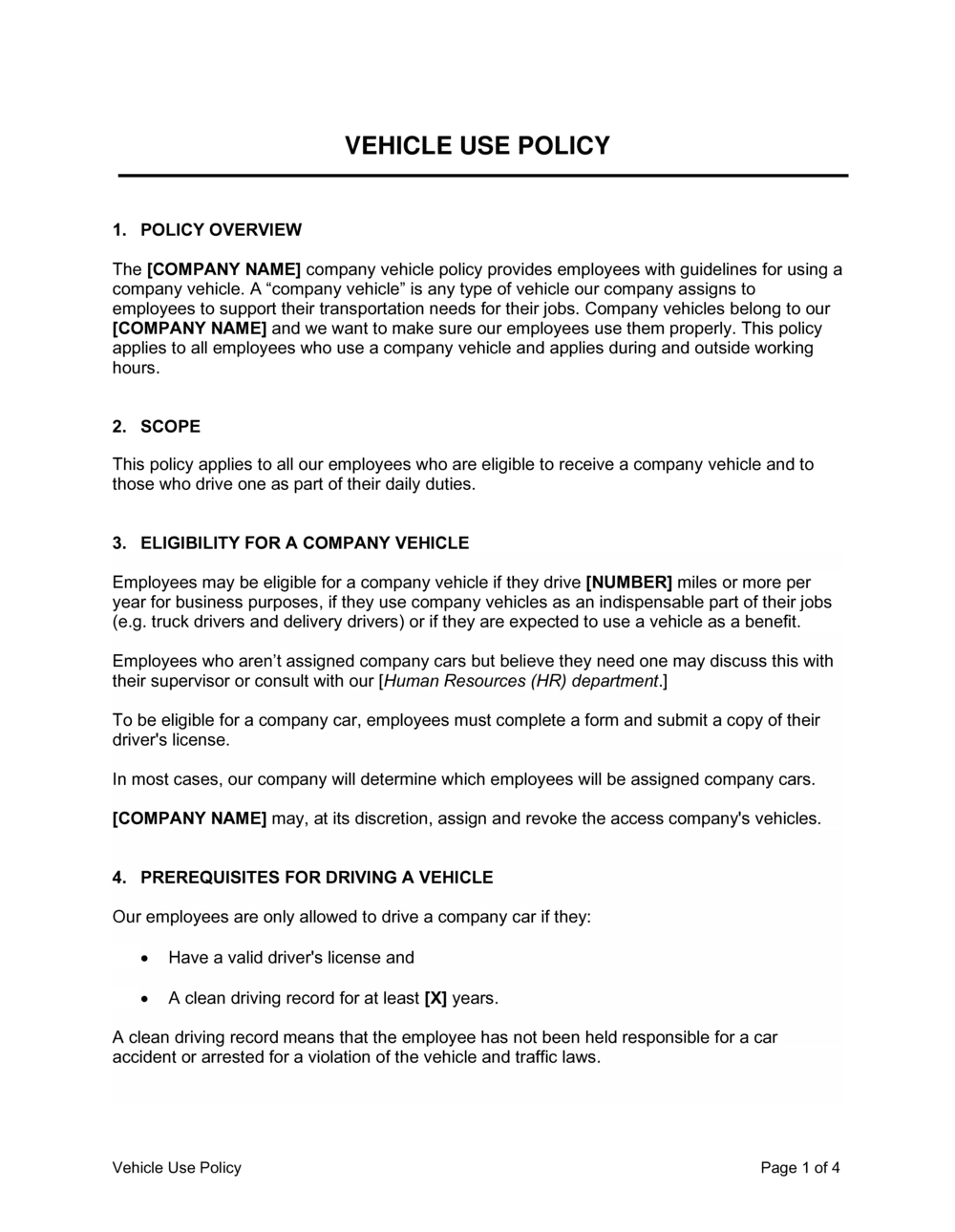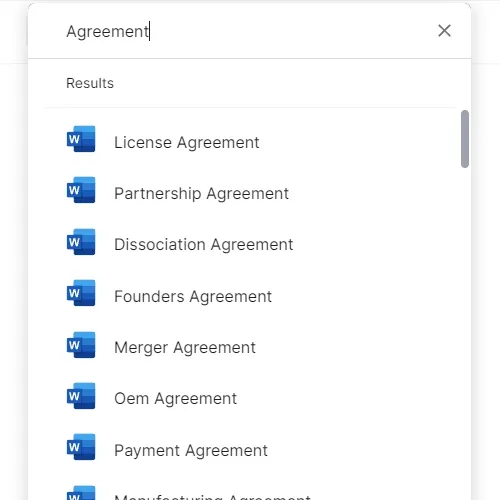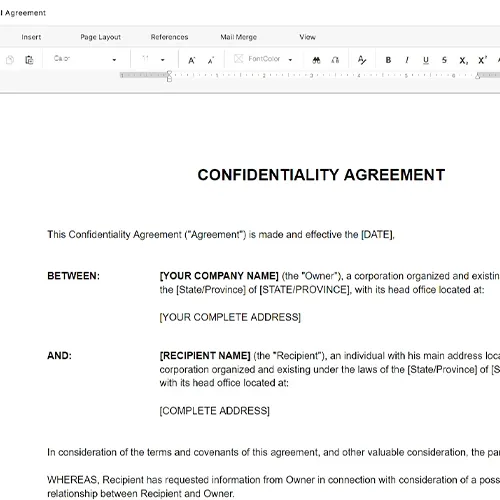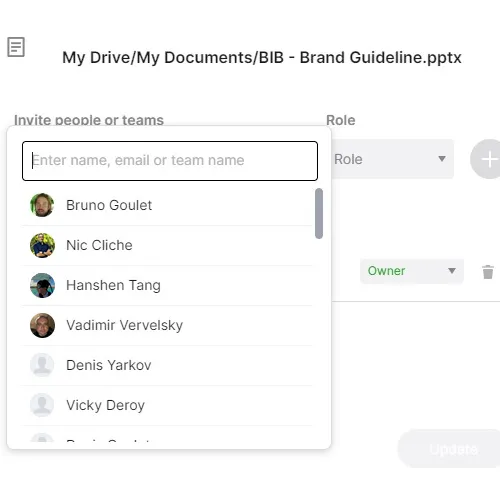Company Vehicle Policy Template

Crafting a Robust Company Vehicle Policy
View the key components of a Company Vehicle Policy
In an era where efficient resource management is key to business success, implementing a well-structured Company Vehicle Policy is vital for business owners.
This policy not only ensures the responsible use of company vehicles but also plays a pivotal role in maintaining safety standards, adhering to legal compliances, and fostering a culture of accountability.
It's an indispensable company policy for businesses relying on company vehicles for day-to-day operations.
What is a Company Vehicle Policy?
A Company Vehicle Policy is a comprehensive document that lays out the rules and guidelines for using, maintaining, and managing company-owned vehicles. Far more than just a set of rules, it is a comprehensive code of conduct that sets expectations for how employees should use these assets in line with the company’s operational goals and standards.
A sound Company Vehicle Policy is a crucial element for mitigating risks, ensuring legal and regulatory compliance, and maintaining clear communication between the company and its employees.
Key Elements of a Company Vehicle Policy
A comprehensive Company Vehicle Policy should include the following elements:- Eligibility and Usage Guidelines - Who can use company vehicles, for what purposes, and under what conditions.
- Safety and Compliance Standards - Safety protocols, adherence to traffic laws, and compliance with insurance requirements.
- Maintenance and Reporting Procedures - Guidelines for vehicle maintenance, reporting of accidents, and handling of mechanical issues.
- Fuel and Expense Management - Policies for fuel usage, reimbursement for travel expenses, and record-keeping.
- Disciplinary Actions for Non-compliance - Clear consequences for policy violations to ensure adherence and accountability.
Other Documents Related to a Company Vehicle Policy
When drafting a Company Vehicle Policy, it’s helpful to also consider related documents such as:
- Employee Handbook - Integrating the vehicle policy into the broader set of company policies.
- Insurance Documents - Outlining coverage details and insurance procedures.
- Accident Report Forms - Standardized forms for reporting vehicle incidents.
- Vehicle Maintenance Logs - For tracking and scheduling vehicle maintenance.
Why Use Business in a Box for Your Company Vehicle Policy?
For over two decades, Business in a Box has been the go-to resource for business owners seeking reliable and professionally crafted legal and business templates. Over the last 20 years, we’ve served millions of entrepreneurs, business owners, CEOs, and managers, in over 190 countries and territories worldwide.
Our extensive library features over 3,000 business and legal documents, and has been developed through a collaboration with industry experts and lawyers.
When you choose Business in a Box, you gain access to:
- Professionally Drafted Templates - Developed by experts, ensuring your policy is comprehensive and compliant.
- Customizable Documents - Tailor your Company Vehicle Policy to fit your specific business needs and legal requirements.
- Ease of Use - Simplify the process of policy creation, saving time and resources for your business.
- Comprehensive Suite of Business Documents - Access to a wide range of templates, including related policies and forms, for holistic business management.
By using Business in a Box, you can efficiently develop a Company Vehicle Policy that safeguards your assets, ensures employee compliance, and upholds the highest standards of operational integrity. This tool is an invaluable asset for any business owner seeking to create a clear, effective, and legally sound vehicle policy.
Updated in November 2023
Reviewed on

Crafting a Robust Company Vehicle Policy
View the key components of a Company Vehicle Policy
In an era where efficient resource management is key to business success, implementing a well-structured Company Vehicle Policy is vital for business owners.
This policy not only ensures the responsible use of company vehicles but also plays a pivotal role in maintaining safety standards, adhering to legal compliances, and fostering a culture of accountability.
It's an indispensable company policy for businesses relying on company vehicles for day-to-day operations.
What is a Company Vehicle Policy?
A Company Vehicle Policy is a comprehensive document that lays out the rules and guidelines for using, maintaining, and managing company-owned vehicles. Far more than just a set of rules, it is a comprehensive code of conduct that sets expectations for how employees should use these assets in line with the company’s operational goals and standards.
A sound Company Vehicle Policy is a crucial element for mitigating risks, ensuring legal and regulatory compliance, and maintaining clear communication between the company and its employees.
Key Elements of a Company Vehicle Policy
A comprehensive Company Vehicle Policy should include the following elements:- Eligibility and Usage Guidelines - Who can use company vehicles, for what purposes, and under what conditions.
- Safety and Compliance Standards - Safety protocols, adherence to traffic laws, and compliance with insurance requirements.
- Maintenance and Reporting Procedures - Guidelines for vehicle maintenance, reporting of accidents, and handling of mechanical issues.
- Fuel and Expense Management - Policies for fuel usage, reimbursement for travel expenses, and record-keeping.
- Disciplinary Actions for Non-compliance - Clear consequences for policy violations to ensure adherence and accountability.
Other Documents Related to a Company Vehicle Policy
When drafting a Company Vehicle Policy, it’s helpful to also consider related documents such as:
- Employee Handbook - Integrating the vehicle policy into the broader set of company policies.
- Insurance Documents - Outlining coverage details and insurance procedures.
- Accident Report Forms - Standardized forms for reporting vehicle incidents.
- Vehicle Maintenance Logs - For tracking and scheduling vehicle maintenance.
Why Use Business in a Box for Your Company Vehicle Policy?
For over two decades, Business in a Box has been the go-to resource for business owners seeking reliable and professionally crafted legal and business templates. Over the last 20 years, we’ve served millions of entrepreneurs, business owners, CEOs, and managers, in over 190 countries and territories worldwide.
Our extensive library features over 3,000 business and legal documents, and has been developed through a collaboration with industry experts and lawyers.
When you choose Business in a Box, you gain access to:
- Professionally Drafted Templates - Developed by experts, ensuring your policy is comprehensive and compliant.
- Customizable Documents - Tailor your Company Vehicle Policy to fit your specific business needs and legal requirements.
- Ease of Use - Simplify the process of policy creation, saving time and resources for your business.
- Comprehensive Suite of Business Documents - Access to a wide range of templates, including related policies and forms, for holistic business management.
By using Business in a Box, you can efficiently develop a Company Vehicle Policy that safeguards your assets, ensures employee compliance, and upholds the highest standards of operational integrity. This tool is an invaluable asset for any business owner seeking to create a clear, effective, and legally sound vehicle policy.
Updated in November 2023
Easily Create Any Business Document You Need in Minutes.

Download or open template
Access over 3,000+ business and legal templates for any business task, project or initiative.

Edit and fill in the blanks
Customize your ready-made business document template and save it in the cloud.

Save, Share, Export, or Sign
Share your files and folders with your team. Create a space of seamless collaboration.


